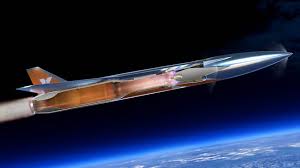
Breaking News
 Tulsi's Assessment That Putin Doesn't Want To Conquer All of Ukraine Is Absolutely Correct
Tulsi's Assessment That Putin Doesn't Want To Conquer All of Ukraine Is Absolutely Correct
 Google AI Lead Shane Legg Defines Levels of AGI and Superintelligence and How to Test for...
Google AI Lead Shane Legg Defines Levels of AGI and Superintelligence and How to Test for...
 EngineAI T800: Born to Disrupt! #EngineAI #robotics #newtechnology #newproduct
EngineAI T800: Born to Disrupt! #EngineAI #robotics #newtechnology #newproduct
 Tuesday War Room LIVE: Trump Mentioned in ANOTHER Big Batch of Epstein Files...
Tuesday War Room LIVE: Trump Mentioned in ANOTHER Big Batch of Epstein Files...
Top Tech News
 Travel gadget promises to dry and iron your clothes – totally hands-free
Travel gadget promises to dry and iron your clothes – totally hands-free
 Perfect Aircrete, Kitchen Ingredients.
Perfect Aircrete, Kitchen Ingredients.
 Futuristic pixel-raising display lets you feel what's onscreen
Futuristic pixel-raising display lets you feel what's onscreen
 Cutting-Edge Facility Generates Pure Water and Hydrogen Fuel from Seawater for Mere Pennies
Cutting-Edge Facility Generates Pure Water and Hydrogen Fuel from Seawater for Mere Pennies
 This tiny dev board is packed with features for ambitious makers
This tiny dev board is packed with features for ambitious makers
 Scientists Discover Gel to Regrow Tooth Enamel
Scientists Discover Gel to Regrow Tooth Enamel
 Vitamin C and Dandelion Root Killing Cancer Cells -- as Former CDC Director Calls for COVID-19...
Vitamin C and Dandelion Root Killing Cancer Cells -- as Former CDC Director Calls for COVID-19...
 Galactic Brain: US firm plans space-based data centers, power grid to challenge China
Galactic Brain: US firm plans space-based data centers, power grid to challenge China
 A microbial cleanup for glyphosate just earned a patent. Here's why that matters
A microbial cleanup for glyphosate just earned a patent. Here's why that matters
 Japan Breaks Internet Speed Record with 5 Million Times Faster Data Transfer
Japan Breaks Internet Speed Record with 5 Million Times Faster Data Transfer
Venus Aerospace Hypersonic Engine Breakthroughs

They have a ramjet integrated with a rotating detonation rocket engine (RDRE) which they call the Venus Detonation Ramjet (VDR2). This will enable hypersonic flight (up to Mach 6-10) from conventional runways, with emphasis on efficiency, challenges, and innovations. It could also be used to massively boost the payload to space.
They use hydrogen peroxide (H2O2) mixed with fuel in the RDRE to achieve the detonation process.
Duggleby introduces Venus Aerospace's unique approach to hypersonic propulsion, combining a traditional ramjet (for efficient high-speed cruising) with an RDRE (for high-thrust takeoff and acceleration). He contrasts this with conventional turbofan engines, noting that rockets and detonation-based systems are more efficient at supersonic and hypersonic speeds. The RDRE is described as a game-changer" ecause it uses a continuous detonation wave rather than steady combustion, leading to 15-30% better fuel efficiency and higher thrust in a compact design.
Efficiency and Specific Impulse (ISP) Curve
The discussion dives into engine efficiency, where Duggleby explains how the RDRE rides up the ISP curve compared to traditional rockets.
Hydrogen peroxide (as a liquid oxidizer, stabilized at 70-100% concentration for safety and performance) is mixed with fuel (such as jet fuel or hydrocarbon-based propellants) and injected into a ring-shaped annular chamber. This mixture is ignited to create a supersonic detonation wave that rotates continuously around the chamber at thousands of revolutions per second. The detonation wave sustains itself by compressing and igniting fresh mixture, generating immense pressure and thrust with less propellant consumption.
This process is more energetic than deflagration (subsonic combustion) in standard engines, allowing for greater range and payload capacity.
Bench tests were initially done where the RDRE ran for extended durations (e.g., 4 minutes).
There were many technical Challenges including Heat Management and Modeling.



